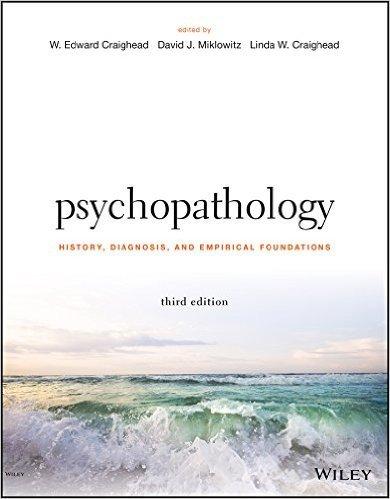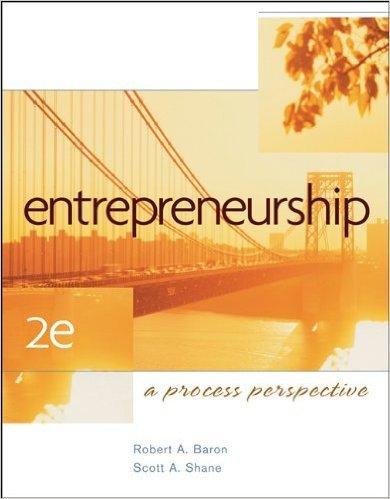https://ebookmass.com/product/etextbook-978-

More products digital (pdf, epub, mobi) instant download maybe you interests ...

A History of Asia 7th Edition, (Ebook PDF)
https://ebookmass.com/product/a-history-of-asia-7th-editionebook-pdf/

eTextbook 978-0205996124 The World’s History, Combined Volume
https://ebookmass.com/product/etextbook-978-0205996124-theworlds-history-combined-volume/

eTextbook 978-0393265965 America: A Narrative History (Brief Tenth Edition) (Vol. One-Volume)

https://ebookmass.com/product/etextbook-978-0393265965-america-anarrative-history-brief-tenth-edition-vol-one-volume/ eTextbook 978-1119221739 Psychopathology: History Diagnosis and Empirical Foundations 3rd Edition
https://ebookmass.com/product/etextbook-978-1119221739psychopathology-history-diagnosis-and-empirical-foundations-3rdedition/

eTextbook 978-1118138502
Private Equity: History, Governance, and Operations (Wiley Finance)
https://ebookmass.com/product/etextbook-978-1118138502-privateequity-history-governance-and-operations-wiley-finance/

eTextbook 978-1305268920 Fundamentals of Biostatistics
https://ebookmass.com/product/etextbook-978-1305268920fundamentals-of-biostatistics/

eTextbook 978-1305652958
Theories of Personality
https://ebookmass.com/product/etextbook-978-1305652958-theoriesof-personality/

eTextbook 978-1305505490 Macroeconomics: A Contemporary Introduction
https://ebookmass.com/product/etextbook-978-1305505490macroeconomics-a-contemporary-introduction/

eTextbook 978-0324365580 Entrepreneurship: A Process Perspective
https://ebookmass.com/product/etextbook-978-0324365580entrepreneurship-a-process-perspective/
Another random document with no related content on Scribd:
identified Arthur Orton as her son, and stuck to it through thick and thin. Hallucinations of that sort do occur. And one couldn't help noticing Miss Fordingbridge's talk about spiritualism and so forth, all tending to show that she had a sort of fixed idea that her nephew would turn up sooner or later. That discounted the value of her identification a good deal, but it didn't discredit it completely, of course.
“Now go back a stage. The thing was a two-man job at Peter Hay's. Therefore, whether the claimant or Fordingbridge was our man, we had to find a second fellow for the accomplice's part. The claimant we knew nothing about at that stage; and I proposed to look into his affairs later. If Paul Fordingbridge was one of the murderers, on the other hand, then, who was his accomplice? ‘Cui bono?’ again. If the claimant could be kept out of the succession, who was next on the list? Stanley Fleetwood's wife.”
Careless of the inspector's feelings, Wendover broke out at this point:
“You won't persuade me you were such an ass, Clinton, as to suppose that young Fleetwood helped in a murder merely for the sake of cash or any other reason?”
“It wasn't my business to make pets of anyone, and exclude them from suspicion merely because I liked them in private life, squire. Many murderers are most amiable persons—Crippen, for example. ‘A fair field and no favour’ is the only motto for a conscientious detective.
“Before we had time to delve further into the Peter Hay case, however, the Staveley murder occurred. There's no need to go into the whole business; it's fresh in your minds; but I'll tell you the main points that struck me when we'd finished our examination of the scene of the murder.
“First, Staveley had banged his wrist and stopped his watch at 11.19. But, of course, that didn't prove he'd been killed at that moment. Second, his clothes were wet under his rainproof; and, he'd been shot through both rainproof and jacket, it must have rained before he was shot. Third, since the car-tracks had gone back on a dry road for a while before the rain came on and made them
clearer, Staveley was killed after the car had gone off; and the people in the car weren't mixed up in the actual killing. Fourth, there was only one cartridge-case to be seen—the one on the rock. There was no cartridge-case at the groyne when I searched the place. Besides, that track at the groyne belonged to the man in the car, and he was cleared completely by the rain question. If I was right in my inferences, then the murder must have been committed by one of three people: the woman with the neat shoes, Billingford, or someonewhohadleftnotracksonthesand.
“The letter we found in Staveley's pocket showed the business; and you worked up the case against them that Mrs. Fleetwood had been to meet him on the previous night at the rock; and, as she was acting in conjunction with a man, there wasn't much trouble in inferring that young Fleetwood might have been on the spot also, as soon as we heard that the Fleetwoods' car had been out all night: You, inspector, jumped to the conclusion that the Fleetwoods were at the back of the business; and you worked up the case against them very convincingly. But, as I told you at the start, the case wasn't sound. I wanted all the data I could get, of course, so I didn't discourage you too much; and you eventually dragged out a lot of interesting material about the events of the night.
“Meanwhile, we'd come to a blank end with the Fleetwoods and had turned to Billingford. My impression was that he seemed genuinely surprised by the news of Staveley's murder; but he might have been acting, for all one could tell. What we did get out of him was the general impression that Flatt's cottage was inhabited by a gang of rogues. How many were there? Three, if one took Billingford at face value; four, if one believed the story the claimant blurted out when we questioned him at the cottage.
“Anyone could see that the fourth man was a dark horse. He might be the murderer whom they were shielding, possibly. But there was another explanation of his disappearance; he might be someone well known to the local people, and whom it was desirable to keep under cover. How would that fit in with things? Suppose the claimant was an impostor; he wouldn't be very anxious to meet the villagers more than he could help, for fear of dropping on someone
who might trap him and expose him. The less he saw of his neighbors the better; and his disfigurement gave him a fair excuse for keeping indoors in the daytime. Staveley was well enough known to the villagers also; and perhaps he had good reason for not wishing his presence known. If the fourth man was in the same boat, then none of them would care to go shopping and so forth, and yet supplies had to be got daily. Hence it might be convenient to have a man like Billingford as the nominal host, to act as gobetween for them in their public transactions. That's how it appeared to me. Naturally, I was curious about the fourth man, and I got you, inspector, to set a watch and see if he could be recognised.
“That left me with a fair suspicion that these fellows were hatching some devilment or other at the cottage. Then I noticed the card-index; and I saw light to some extent. A card-index implies the need for ready reference. The claimant, if he were a fraud, would need to cram himself with all the available facts about the doings of the real Derek Fordingbridge—just as Arthur Orton crammed up all the facts about Roger Tichborne. And a card-index would be the handiest repository of all the news they could collect. As you saw for yourself, squire, that guess of mine was right.
“Assume that state of affairs—I had no certain knowledge then— and things begin to fall into their places. I've given you my notion of why Billingford was needed. What about the other three?
“The claimant was obviously needed to represent Derek Fordingbridge; and he'd been cast for the part on two grounds. First, his face was so much damaged that no one could swear to his original appearance. He might quite well have been Derek or anyone else, so far as that went. Then the loss of his fingers made him invaluable also, because he couldn't be expected to write like the real Derek nowadays, with a mutilated hand. All that was wanted in addition was a good memory to cram up the immense amount of facts that they needed in order to meet questioning.
“Then there was Staveley. What was he doing in the affair? Well, obviously, he had a lot of information about the Foxhills people which he must have picked up while he stayed there with the real
Derek on leave, and also some more facts which he must have learned from Mrs. Fleetwood from time to time.
“And, finally, there was the fourth man. I suspected that he might turn out to be a second information-mine; and when I heard the report you gave me, inspector, about the fishermen and Sapcote having recognised him as an ex-valet at Foxhills, I felt I was getting on to fairly sure ground.
“Well, there were four of them to share in the loot if they pulled it off. But a third's better than a quarter-share any day. If they had pumped Staveley dry of his information, and had got notes of it all on that card-index, what further need had they for friend Nicholas? None whatever.
“And suppose they could involve the Fleetwoods in a murder case and get them hanged, wouldn't that remove one possible set of objectors to the claimant dropping into the funds? So I didn't exclude the possibility that they knew—although they denied it—that Staveley was going to meet Mrs. Fleetwood at Neptune's Seat that night. When I say ‘they,’ I really mean the faceless fellow and Aird.
“There was a further long shot possible. I'm not sure if it really entered into their plans; but I give it you for what it's worth. Suppose they suggested a walk along the sands to Billingford that evening, and arranged matters so that he would reach the rock just after the murder had been committed and they had cleared out. Wouldn't that have been a tight corner for Master Billingford? With any luck he might have been hung for the murder, since he'd no evidence but his own to rely on to prove he wasn't on the spot when the shot was fired. And then there would be only two of them, instead of four, to share out the loot if they got it.
“You see now how I was beginning to look at the affair. But I was considerably worried by the woman with the neat shoe. Her part in the business would have to be cleared up eventually; but for the moment I had to put it aside.
“And then our friends made their second blunder—trying to prove too much, as usual. Friend Cargill came on the scene, innocently going down to bathe. He sat down on the groyne and proceeded to dig up a .38 cartridge-case, which he presented to me like an honest
fellow anxious only to help the police. Well, all three of us had been over that particular bit of sand and had seen no cartridge-case before he arrived on the scene. Also, as I pointed out to you, squire, an automatic ejects its cartridge-case sharply and jerks it well behind you, especially on hard sand where the thing can jump along. It was obvious that no one could fire a shot from Fleetwood's position at the groyne and leave his ejected shell lying close under the groyne, where Cargill assured me he'd kicked it up. So naturally I began to look at Mr. Cargill with more than common interest; and, as you saw yourselves, he's got a build rather like the claimant's, so I wondered if they were related.
“Then our friend Cargill told us his yarn about meeting Derek Fordingbridge in the war; and off he went to meet his dear old friend. And later on he volunteered eagerly that he'd had a talk with the dear old fellow. By that time I was more than a bit suspicious of the dear old friend; and naturally some of that suspicion spilled over on to Cargill. If the claimant was an impostor, then the man who recognised him was a liar; and, as I had no use for aimless liars in a case of this sort, I inferred that Master Cargill was one of the gang, posted at the hotel for intelligence purposes—to keep an eye on the Fordingbridge group. And that cleared up one of the main difficulties I'd had—namely, how the murderer had known to use a .38 automatic so as to match the Fleetwood pistol. Of course, if you assume that Cargill had taken the opportunity of rummaging in Fleetwood's room, or had drawn him into talk about pistols, they would be sure of their ground on that point. That had been a troublesome point to me; for I didn't like to stretch coincidence to the extent of assuming it was mere accident that made the Fleetwood pistol and the bullet in the body both of the same calibre.
“It remained to check Billingford's story as far as possible, and you know how the runnel helped us in that. What the facts of the case proved beyond any reasonable doubt was that at 11.19 P.M. Billingford was about three-quarters of a mile from Neptune's Seat. With the sound of the sea in his ears, it's most unlikely that he could hear a pistol-shot at that distance. And his tracks showed him walking along quite steadily there. Then, at a point far nearer the
rock—a point that I suppose he may have reached about 11.35 P.M. —the trail showed that he began to run. Now that fitted in with his story. At that second point he might quite well have heard a shot fired on the rock, just as he said he did. He couldn't possibly, on the facts we established, have reached the rock before about 11.37 or 11.38; and by that time the murder was done and the murderer had got away.
“By that time I felt fairly sure of my ground; and I got that digging in the sand started, just on the off-chance that we might get hold of the shell of the cartridge which really did kill Staveley. It wasn't absolutely necessary for the case; but, if it turned up, then it would help to confirm my notions. As it was bound to be below tidemark, there was no point in trying to locate its exact position, since it might have been washed about by the waves in the falling tide after the shot was fired. So I simply had the whole strip of sand dug up and dumped down above the high-water mark for future examination.
“Meanwhile, I'd been on the hunt for the dame with the neat shoe—a No. 4, as you remember. There were several of the guests wearing shoes of that size; but I picked out Mme. LaurentDesrousseaux first of all because she seemed likeliest. Staveley had served in France; she was a Frenchwoman; she was at Lynden Sands Hotel, where she most obviously was out of place and knew no one. It seemed best to find out something about her.
“I talked to her. She was a bit lonely, it seems, and quite ready to go for a walk now and again. I know my own length of pace; so, by counting hers in a given distance and comparing with the numbers of my own, I made a fair guess at her step-measurement. It fitted in with the prints of the neat shoe on the sands. Gentle treatment did the rest, as you saw. She told us her story quite honestly, and it threw a good deal of light on the affair. I inferred from it just what you yourself inferred later on, squire: the shot fired by Mrs. Fleetwood at 11.19; Staveley's fall on the rock; and the bolt in the car to the hotel. And, in turn, this checked Billingford's story quite neatly, because he couldn't have heard the shot at 11.19, being so far away. It was the second shot, about 11.35, that he heard.
“Now, let's reconstruct what really happened; and remember that, although it was full moon, it was a cloudy night, and the light was bad all through. We'll begin with Staveley leaving the cottage. He's in a bad temper; been drinking as well as playing poker. He gets to the rock and waits for Mme. Laurent-Desrousseaux. She's late; and his temper gets worse. She arrives and tells him she wants to get a divorce arranged. Between his temper and the chance he sees of making her pay sweetly for the favour she asks he treats her brutally, and sends her off both pained and angry. Then Mrs. Fleetwood arrives, and that meeting culminates in the shot she fired at 11.19 by accident. Then you get the talk between the Fleetwoods at the car, overheard by Mme. Laurent-Desrousseaux; their drive back to the hotel; and her hurry to get away from what she thinks is the scene of a murder. That leaves Staveley on the rock, stunned by his fall; and Billingford sauntering across the sands towards the runnel. In the meantime, Aird and the gentleman without a face have got out the boat belonging to Flatt's cottage and are rowing for Neptune's Seat, which is just above tide-level.
“Down comes the rain. Staveley gets soaked; and perhaps the chill revives him. He staggers up and puts on his rainproof. Then in comes the boat, and they shoot him without having to land on the rock at all. The ejector jerks the cartridge-case into the water, where it sinks into the sand and gets covered up by the wash of the waves. The murderer and his pal row off into the dark. Meanwhile Billingford has heard the shot, and he, not knowing anything about this little plot, rushes up—rather pluckily—to see what it's all about, and he finds the body on the rock. That explains the two shots and the general chronology of the affair.
“Now, by this time friend Cargill had made his second error. He'd been keeping his eye on things at the hotel, and he'd got hold of that envelope which Mme. Laurent-Desrousseaux addressed to Staveley and dropped in the waste-paper basket. He thought he could give me a fresh scent to follow up, and he was just going to produce it when he realised that Mme. Laurent-Desrousseaux herself was with us; so he suppressed it then and handed it over later on. All it did was to confirm me in the idea that he was one of the gang.
“Up to that point everything seemed plain sailing. I had, as I believed—and as it turned out in the end—got the thing cut and dried against the gang at the cottage. The case wasn't complete; but, short of getting some direct evidence from one of the two actual murderers, I didn't see how I was to make it absolutely watertight. They'd been a bit too clever for a jury, I feared. And, of course, the Peter Hay case was getting clearer also, once you could assume that these fellows would stick at nothing.
“Then, out of the blue, came the shooting of Cargill. That wouldn't fit in with the rest of the business. Cargill wasn't a pawn like Staveley and Billingford. He was watching one end of the business for them—keeping an eye on us for one thing; and, besides, I was becoming more and more sure that he was a brother of the faceless fellow, and possibly the brains of the gang. They had a use for him; they wouldn't shoot him. But, then, who did?
“And at that point I took a long cast back and raked up again a possibility I'd dismissed at an earlier stage. Suppose that both the claimant and Paul Fordingbridge were wrong 'uns, what then? Suppose friend Paul had been at some hanky-panky with the funds he held in trust for his nephew. Then, whether the claimant was an impostor or not, it would be very convenient for friend Paul if the claimant left this vale of tears. And the claimant and Cargill were much alike in build; and Cargill was shot after leaving the cottage. There might be something in it. And when I found that friend Paul carried a pistol in his pocket, and didn't care who knew it, by the look of his jacket, I began to think furiously.
“I didn't blame Paul for carrying arms. In his position, with that gang at the cottage in the offing, I think it was a wise precaution; for he must have known that he was the main stumbling-block in the claimant's road. But I don't think that he kept within the limits of precaution. I think he decided to get ahead of them by knocking out the claimant—and after that he would be able to live in peace as heretofore.
“However, I never had time to probe that matter any further, for the next business was the disappearance of friend Paul. I think I have a fair notion how that was managed.
“They approached him and asked for an interview. He sent the claimant a scrap of paper:
‘Meet me at the Blowhole to-night at 11 P.M. Come alone.’
The last two words give you the key to friend Paul's feelings about them. One man he could keep an eye on, and he didn't propose to have any more present. Of course, they filed that note and used it again later, as you'll remember.
“Probably the claimant met him at the Blowhole and suggested a walk over the open sands as a good way of avoiding eavesdroppers. Paul would feel safer in the open. By the time they reached the old wreck the claimant would have got him interested, or else his natural fears would be dissipated. At the hulk the claimant obviously turned, as though to go back across the sands, and Paul turned with him. Then, from behind the hull, Aird stole out and did lecoup du PèreFrançois.”
“What's that?” Wendover demanded. “You talked a lot about Père François and Sam Lloyd's ‘Get off the Earth’ puzzle, I remember.”
“If you happen to be in Paris late at night, squire, and a roughlooking customer asks you the time or begs for a match, you'd better look out for his friend—le Père François, they call him—who may be coming up behind you with a long strip of flannel in his hand. While the first man holds you in talk, the Père François lassoes you with his flannel rope and pulls the two ends so that it catches your throat. Then he sinks down suddenly and turns his back to you, slipping the rope over his shoulder as he turns. This pulls you down back to back with him; and when he rises to his normal height again, there you are on his back like a sack on a coal-heaver's back, with your feet off the ground. The first man then goes through your pockets at his leisure, and if you choke to death before he's done, so much the worse for you. You can't struggle with any effect.
“That I suspect, was how they caught friend Paul; and Aird just carried him on his back to the quicksand and dumped him in. From Aird's footmarks it was clear he'd been carrying a heavy weight; the prints were deep and the feet almost parallel after he'd done his
Père François trick. See now what I meant by ‘Get off the Earth’? Naturally there were no signs of a struggle, since all the struggle was off the ground. And, of course, they'd take care to wear shoes that left no clue—common type and largest size. And they got away either in a boat or by wading along in the water, so as to leave no tracks. I could see no way to bring the affair home to them. The only sure method depended on our wringing evidence out of one of them somehow; and I didn't see how it could be managed just then. Also, I hadn't much of a case against Cargill beyond suspicion; and I wanted him too, if it could be managed.
“The next thing was the arrival of the Fordingbridge lawyer; and from him I learned that we might get on the track of any malversations by Friend Paul if I went up to London. I wanted to know definitely where I stood in that matter, because, if I was wrong there, then the whole latter part of my notions would collapse. So I made up my mind to go to town.
“But I was very uneasy. Now that Paul Fordingbridge was out of the road for good, Mrs. Fleetwood was the only person between the claimant and the cash. If she disappeared in her turn, then Miss Fordingbridge would have welcomed her long-lost nephew with pure joy and gratitude for his preservation, and there would have been no one left alive to object to his coming into Foxhills and the rest. Therefore, I was inclined to take some steps to see that she came to no harm while I was away.
“The obvious thing to do would have been to warn her. But that would have meant giving my case away to the Fleetwoods; and I don't feel inclined to chuck confidences around if it can be avoided, as I've pointed out before. Further, the police were not altogether in good odour with the Fleetwoods; and I wasn't sure if I'd make much impression on them by a mere warning, with nothing to back it. So I hit on the notion of putting a man on to watch Mrs. Fleetwood; and, as a further precaution, I fixed up that code-wire so that if I wanted it I could have her arrested at a moment's notice, and then she'd be safe in police hands and out of reach of the gang.
“I went up to London and found, as I'd expected, that friend Paul had been playing ducks and drakes with all the securities he could
handle without exciting too much suspicion. He seems to have been speculating right and left, most unsuccessfully. So I'd been right about his motives, anyhow.
“But I couldn't get out of my mind the risk I was letting that girl run; and at last—I suppose Miss Fordingbridge would say it was telepathy or something—I got the wind up completely, and wired to have her arrested. After that I felt safer.
“As you know, they'd been too quick for me. They fished out the note that Paul Fordingbridge wrote to the claimant and they sent it to her as if it came from Paul himself, after altering the hour on it. She thought her uncle was in trouble; went to help him; dodged the constable; and fell straight into the trap they'd set for her. You know all the rest. And probably by now you understand why I was quite content to let Mr. Aird have his full dose in the funnel of the souffleur. There's nothing like a confession for convincing a jury, and I meant him to hang if it could be managed. I didn't want to run any risk of his getting off merely because it was all circumstantial evidence.”
“Thanks,” said Wendover, seeing that the chief constable had finished his outline. “To quote from that favourite detective story of yours:
In one moment I've seen what has hitherto been Enveloped in absolute mystery.
There's just one point I'd like to hear you on. What about Staveley's resuscitation after his being killed in the war? Did you get to the bottom of that by any chance?”
Sir Clinton hesitated a little before answering.
“I don't much care about pure guesswork, squire; but, if you'll take it as that, then I don't mind saying what I think. Suppose that is what happened. Staveley and Derek Fordingbridge went into action together; and Staveley was under a cloud at the time. He'd probably had enough of the war, and was looking for a way out. Derek Fordingbridge gets killed in that battle, and is probably badly damaged in the process—made unrecognisable we may suppose.
Staveley sees him killed, and grasps at the chance offered. He takes Derek's identity disc off the body and leaves his own instead. Probably he takes the contents of the pockets too, and puts his own papers into the dead man's pockets. They were friends; and, if anyone saw him at work, he'd have his excuse ready. No one would think he was robbing the dead. Then he goes on—and simply hands himself over to the enemy. He's a prisoner of war—under Derek's name.
“He manages to escape, and the escape is put down to Derek's credit. But, of course, Derek never turns up again; and naturally people suppose that he must have died of exposure in his last attempt, or been shot at the frontier, or something of that sort. Meanwhile Staveley, once out of Germany, drops his borrowed identity, probably changes his name, and disappears. I suspect he was in very hot water with the military authorities, and was only too glad of the chance to vanish for good.
“After the war, he evidently got in amongst a queer gang, and lived as best he could. Billingford's evidence points to that. And somewhere among this shoal of queer fish he swam up against our friend Cargill. My reading of the thing is that somehow Staveley gave away—perhaps in his cups—something of what I've given you as my guess; and Cargill, remembering his disfigured brother, saw a grand scheme to be worked by putting forward his brother as claimant to the Foxhills property.
“It wasn't half so wild a plan as the Tichborne business, and you know how that panned out at the start. So the three of them set to work to see the thing through. Staveley, I suspect, got hold of Aird, who had invaluable information about all the affairs at Foxhills in the old days. Then they went to work systematically with their cardindex and noted down everything that Aird and Staveley could remember which would bear on the case.
“That accounts for the delay in the claimant turning up. It probably was quite recently that Staveley fell in with Cargill. And evidently the delay points to the fact that Staveley wasn't the originator of the notion, else he'd have got to work much earlier. It was only when he fell in with Cargill, who had a brother suitable to
play the part of the claimant, that anything could be done. Then they must have spent some time in unearthing Aird.
“Well, at last they're ready. They come down to Lynden Sands with their card-index handy. Now, the claimant doesn't want to appear in public more than he can help, for every stranger is a possible danger to him. He might fail to recognise some old friend, and the fat might be in the fire. Nor does Staveley want to show himself; for his presence might suggest the source of the claimant's information. Aird's in the same position. And when they learn that the Fordingbridges are at the hotel, Cargill is detached there to keep an eye on them. Thus they need a go-between; and Billingford is brought down to serve that purpose. Also, as soon as the claimant makes his first move there will be sure to be a lot of gossip in the village, anecdotes of the claimant's history floating round, and so forth; and Billingford will be able to pick them up and report them to the rest of the gang. They'd have been safer to leave Staveley and Aird in London; but I suppose they were afraid something might be sprung on them and they wanted their references handy.
“Peter Hay, I suspect, they fastened on as being the most dangerous witness. Probably Aird made an appointment for the claimant, and they called at the poor old chap's cottage at night. He evidently refused to have anything to do with them; and he was too dangerous to leave alive; so they killed him. Then they went after the diary—probably Aird knew about that, or else Peter may have let the information out somehow—and they took Hay's keys to get into Foxhills. The silver plant was an obvious muddle. They hadn't Cargill at the back of them at the time, and they made that mistake on the spur of the moment.
“By that time they'd got in touch with Miss Fordingbridge. Aird would know all about her spiritualistic leanings, and they played on that string. But soon they learned they were up against Paul Fordingbridge; and they began to see that it would be easiest to put him out of their road.
“Meanwhile Staveley took it into his head to work on his own by trying to blackmail the Fleetwoods. And you know what came of that. The rest of the gang thought they could kill two birds with one
stone—at least, the gang minus Billingford, for really I don't think Billingford was much more than a tool.
“Now, inspector, how far does that square with all the confidences you extracted last night from that precious pair of scoundrels? Do I get a box of chocolates or only a clay pipe in this competition?”
The inspector made no attempt to suppress the admiration in his tone.
“It's wonderfully accurate, sir. You're right on every point of importance—even down to what happened in the war.”
“That's a relief,” the chief constable admitted with a laugh. “I was rather afraid that I'd
. . . Summed it so well that it came to far more Than the witnesses ever had said!
And now I think I'll go back to the hotel and try to make my peace with the Fleetwoods. I like them, and I'd hate to leave a false impression of my character on their minds. Care to come along, squire?”
THE
END
